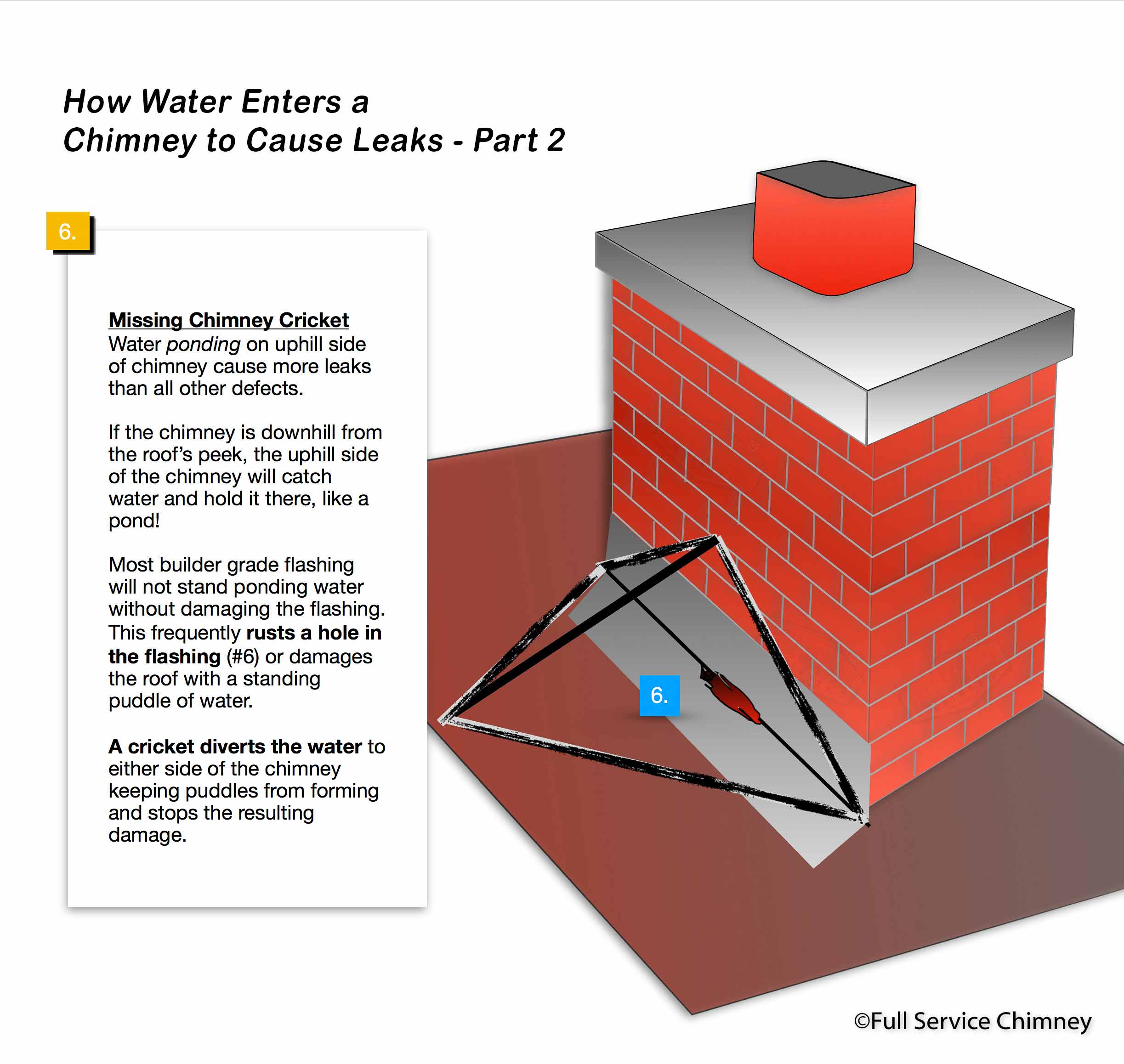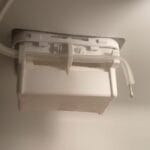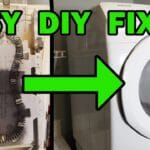A sudden drip, an unexpected water stain, or a damp smell in your home can be a homeowner’s nightmare. Especially when you trace the issue back to a leak around your chimney.
It’s not just about the inconvenience; it’s about protecting your sanctuary from potential damage. Imagine the relief of knowing exactly why your roof is leaking around the chimney and how you can fix it before it spirals into a bigger problem.
You deserve a home that’s safe and dry, and understanding this common issue is the first step to ensuring it stays that way. Dive into this guide to uncover the causes, solutions, and preventative measures that will empower you to safeguard your home. Don’t just manage the symptoms; address the root cause to preserve your peace of mind.

Credit: diy.stackexchange.com
Common Causes
Roof leaks around the chimney can be frustrating. Understanding the common causes helps. It allows homeowners to address issues promptly. This can prevent damage to the home. Let’s explore some typical reasons for these leaks.
Weather Damage
Weather is a major cause of chimney leaks. Heavy rains can erode materials. Snow and ice can cause cracks. Wind can loosen parts of the roof. These elements can lead to water seeping into the home.
Flashing Issues
Flashing connects the chimney to the roof. Poor installation can lead to gaps. Over time, flashing can corrode. This creates pathways for water. Regular checks can prevent these problems.
Cracked Chimney Crown
The crown is the top part of the chimney. Its job is to keep water out. Cracks can develop due to weather. This allows moisture to enter. Repairing cracks early can save a lot of trouble.
Worn Out Mortar Joints
Mortar holds the bricks together. It can wear out over time. This creates spaces for water to enter. Regular maintenance keeps mortar joints strong. This helps in preventing leaks.
Signs Of A Leak
Roof leaks around the chimney can be frustrating. Identifying signs early helps prevent damage. These signs are often visible and easy to spot. Knowing them can save your home from costly repairs.
Water Stains
Water stains are a clear sign of a leak. Look for discoloration on ceilings or walls near the chimney. These marks often appear as brown or yellow rings. They indicate water seepage through the roof.
Musty Odors
A musty smell is another indicator. This smell is often caused by dampness and mold. It might be stronger in areas near the chimney. If you notice it, a leak might be present.
Visible Mold
Mold is a serious sign of water damage. It often grows in damp, dark places. Check around the chimney for any visible mold patches. Mold can spread quickly, causing health issues.
Ceiling Or Wall Damage
Damage to ceilings or walls is concerning. Peeling paint, sagging ceilings, or warped walls signal trouble. These signs suggest water has infiltrated your home’s structure. Addressing these issues promptly is crucial.
Inspection Process
Identifying a roof leak around the chimney requires a detailed inspection. The inspection process helps find the root cause. It allows homeowners to address issues before they worsen. Here’s a step-by-step guide to the inspection process.
Visual Inspection
Start with a visual inspection of the chimney area. Look for water stains or damp spots on ceilings. Examine the chimney’s exterior for cracks or damage. Check for missing or damaged shingles near the chimney. These signs often point to water intrusion.
Use Of Moisture Meter
Use a moisture meter for a more detailed assessment. Test areas around the chimney for moisture. High moisture readings indicate leaks. This tool helps pinpoint leak sources. It provides data that eyes alone can’t detect.
Checking Flashing Integrity
Inspect the flashing around the chimney. Flashing is the metal that seals gaps between the roof and chimney. Look for rust or gaps in the flashing. Damaged flashing often leads to leaks. Ensure flashing is tightly secured and in good condition.
Immediate Fixes
Water seeping around the chimney can damage your home. Quick fixes include checking for cracked flashing or missing shingles. Seal gaps with waterproof sealant to prevent leaks.
When you discover a leak around your chimney, it’s crucial to act quickly. Water damage can escalate rapidly, leading to costly repairs. Fortunately, there are immediate fixes you can apply to mitigate the problem until professional help arrives. Let’s explore some practical solutions you can implement right away to keep your home dry and damage-free.Temporary Sealant Application
Using a temporary sealant is a quick and effective way to stop the leak. Grab a tube of waterproof silicone or polyurethane sealant from your local hardware store. Apply it generously around the edges of the chimney where the leak is occurring. This will create a temporary waterproof barrier. Ensure the area is dry before application to enhance adhesion. This quick fix can hold up for several weeks, giving you time to schedule a professional repair.Tarping The Area
If the weather is worsening, tarping provides an immediate shield against the elements. Use a heavy-duty tarp to cover the chimney and surrounding roof area. Secure it with ropes or bungee cords to prevent it from blowing away. Make sure it covers the entire affected area, extending a few feet beyond the leak for added protection. This temporary solution is particularly useful during heavy rain, protecting your interior from water damage. Have you experienced a leaking chimney before? Share your quick fix in the comments below! Your insight might be the perfect solution for someone else facing the same challenge.Long-term Solutions
Roof leaks around the chimney can cause serious damage over time. Addressing these issues with long-term solutions is crucial. Proper repair ensures your home stays dry and safe. Let’s explore effective fixes for chimney leaks.
Installing New Flashing
Flashing plays a key role in preventing leaks. It’s the metal barrier that seals the chimney and roof connection. Old or damaged flashing can let water seep in. Replacing it with new, high-quality materials ensures a snug fit. This fix stops water from entering your home. Professional installation provides a reliable seal.
Repairing Mortar Joints
Mortar joints hold chimney bricks together. Over time, they can crack or crumble. Damaged mortar lets water in, leading to leaks. Repairing these joints prevents further damage. Use fresh mortar to seal gaps and strengthen the chimney structure. Keeping mortar in good condition avoids costly repairs.
Rebuilding The Chimney Crown
The chimney crown is the top part of the chimney. It shields the chimney from rain and snow. A damaged crown can lead to leaks and structural issues. Rebuilding it with durable materials ensures protection. A well-built crown keeps water out and extends the chimney’s lifespan. This solution offers peace of mind.
Preventive Measures
Preventing roof leaks around your chimney can save you a lot of hassle and money. It’s not just about fixing a leak when it happens but taking steps to stop it from occurring in the first place. Below are some practical preventive measures you can adopt to keep your chimney and roof in top condition.
Regular Maintenance
Regular maintenance is key to preventing leaks around your chimney. You might not think about your roof often, but neglect can lead to costly repairs. Make it a habit to check your roof for any signs of wear or damage at least twice a year.
Take a close look at the flashing around your chimney. If it’s cracked or rusted, it might be time to replace it. Addressing small issues early can prevent major problems down the road.
Chimney Cap Installation
Installing a chimney cap is a simple yet effective way to prevent leaks. A cap acts like an umbrella, keeping rainwater out while allowing smoke to escape. It also keeps debris and animals from entering your chimney.
If you don’t have a chimney cap yet, consider adding one. They’re affordable, easy to install, and can save you from a lot of headaches. Think of it as a small investment with a big payoff.
Routine Inspections
Routine inspections are not just for finding existing problems. They help you spot potential issues before they become serious. A professional inspection can reveal hidden damage that an untrained eye might miss.
You might wonder, “Why pay for an inspection if I don’t see any problems?” The truth is, catching issues early can save you money in the long run. Set up a schedule to have your chimney inspected at least once a year.
Do you remember the last time you checked your chimney for leaks? If not, it might be time to start thinking about these preventive measures. A little effort today can prevent major headaches tomorrow.
When To Call A Professional
Notice water stains or damp spots near your chimney? It’s time to call a professional. Ignoring roof leaks can lead to costly damage. Ensure peace of mind by letting experts handle the repairs efficiently and safely.
When you first spot a leak around your chimney, it might not seem like a big deal. A few drops here and there might appear harmless. But as the problem persists, you may wonder if it’s time to call in a professional. Recognizing when to seek expert help can save you from further damage and costly repairs. Here’s a guide to help you decide.Persistent Leaks
If your roof continues to leak despite your efforts to patch it up, it’s time to get professional assistance. Repeated leaks can mean there is an underlying issue that you might not see. Professionals have the tools and expertise to identify and fix problems that could be causing the leaks. A friend of mine tried to fix a leak around his chimney with some DIY solutions. Despite his best efforts, the problem persisted. Eventually, he called a professional who discovered damaged flashing that needed replacement. This solved the issue and prevented further water damage.Extensive Damage
Noticing signs of extensive damage like water stains on your ceiling or walls? It’s a clear indicator that you need professional help. This type of damage might suggest that water has been seeping in for a while. A professional can assess the full extent of the damage and provide a comprehensive solution. They can also give you advice on preventing future leaks.Safety Concerns
Repairing a leak around your chimney often involves working at heights, which can be dangerous. You should call a professional if you don’t have the right safety equipment or experience. Your safety should always be a priority. Professionals are trained to handle such tasks safely. They can perform the repair without risking injury. Would you rather risk a fall or let an expert handle it? In conclusion, recognizing when to call a professional for a roof leak around your chimney can save you time, money, and potential injury. Take action when you notice persistent leaks, extensive damage, or safety concerns. Your home is worth it.
Credit: www.exteriorproinc.com

Credit: fullservicechimney.com
Frequently Asked Questions
What Causes Roof Leaks Around Chimneys?
Roof leaks around chimneys often result from damaged flashing. Water can seep through gaps or cracks. Regular checks are vital.
How To Identify Chimney Roof Leaks?
Look for water stains, damp patches, or mold near the chimney. Check during heavy rain. These signs indicate leaks.
Can Chimney Leaks Cause Structural Damage?
Yes, prolonged leaks can damage walls, ceilings, and chimney structure. Fix leaks promptly. Prevent costly repairs.
How Often Should Chimney Flashing Be Inspected?
Inspect chimney flashing twice a year. Look for rust, cracks, or loose edges. Early detection prevents leaks.
What Materials Are Best For Chimney Flashing?
Copper and aluminum are durable options. They resist corrosion and weather. Ensure professional installation for best results.
Conclusion
Fixing a roof leak around the chimney is crucial. Water damage can lead to costly repairs. Regular inspections help spot issues early. Clean gutters prevent water buildup. Sealing cracks and joints is effective. Waterproofing membranes offer extra protection. Professional help ensures proper repair.
A sturdy roof safeguards your home. Enjoy peace of mind with a leak-free chimney. Take action now to prevent future leaks. Your home deserves the best care. Stay proactive and protect your investment. Address problems before they escalate. Keep your chimney and roof in top shape.




